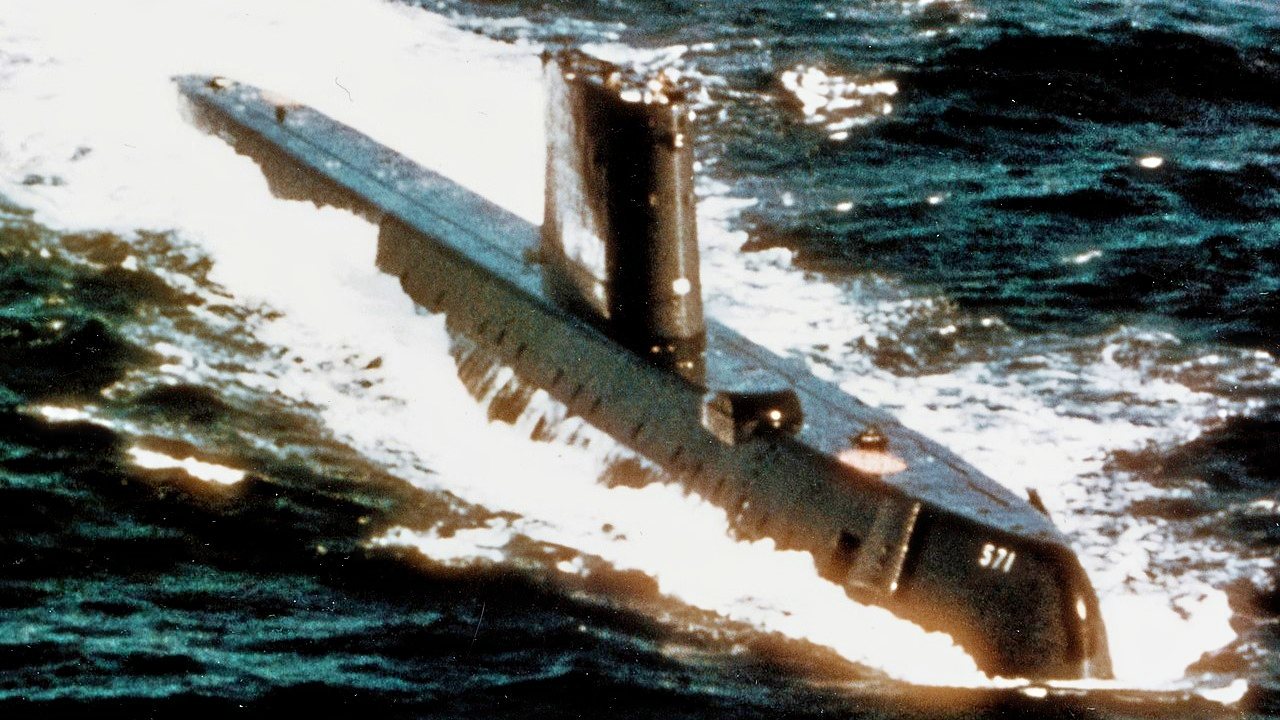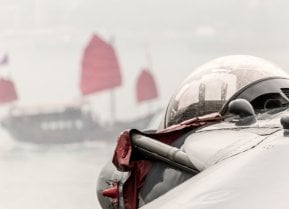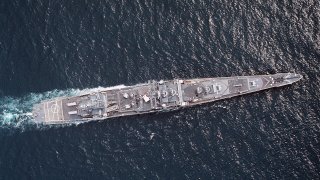USS Long Beach: The Navy's Last Cruiser Was a Powerhouse
The USS Long Beach (CGN-9), commissioned in 1961, was the first nuclear-powered surface combatant and the last cruiser built for the US Navy before transitioning to destroyer hulls.
Summary and Key Points: The USS Long Beach (CGN-9), commissioned in 1961, was the first nuclear-powered surface combatant and the last cruiser built for the US Navy before transitioning to destroyer hulls.
-Serving until 1995, it was notable for its advanced radar systems and missile capabilities.
-The Long Beach participated in the 1964 Operation Sea Orbit, the first nuclear-powered naval circumnavigation, showcasing American technological prowess.
-Despite facing early construction sabotage, it completed a successful three-decade service.
-The Long Beach was eventually decommissioned and scrapped.
USS Long Beach: The First Nuclear-Powered Surface Combatant
The last cruiser ever built for the US Navy also marked a notable first – the initial use of nuclear-power in a surface combatant. The USS Long Beach (CGN-9), commissioned in 1961, was the sole member of the Long Beach-class and the last cruiser built for the Navy before they switched to destroyer hulls. The Long Beach would enjoy a three decade service run, decommissioning in 1995.
Introducing the Long Beach
CGN-9 was the third Navy vessel named for the California city of Long Beach, California. Laid down in 1957, launched in 1959 and commissioned in 1961, the Long Beach was assigned to then-Captain Eugene Parks Wilkinson, who had previously earned the distinction of commanding the world’s first nuclear-powered vessel, the submarine USS Nautilus. Curiously, during construction, the Long Beach was reported to have been sabotaged, when anti-mine electrical cables were found to have been intentionally cut in three separate places. Construction was completed without further incident, however. Mrs. Marian Swanson-Hosmer, the wife of Rear Admiral Craig Hosmer, sponsored the Long Beach.

The Long Beach was originally intended to operate as a smaller frigate, but was redesigned and expanded to serve as a cruiser – which allowed for an open space aft of the bridge box. The open space was originally expected to host Regulus nuclear-armed cruise missiles, but was eventually used to accommodate four launch tubes for the Polaris missiles and later, 38-caliber gun mounts and the ASROC anti-submarine system. Additionally, the Long Beach would at times carry twin Mk-10 launchers with Terrier surface-to-air missiles, and later an Mk-12 launcher with Talos surface-to-air missiles; Mk-15 Vulcan-Phalanx 20mm CIWS; triple 12.75 inch ASW torpedo tubes for Mk 44 or Mk 46 ASW torpedoes; and eventually, launchers for Harpoon missiles and Tomahawk cruise missiles.
With the highest bridge of any ship smaller than an aircraft carrier, the Long Beach appeared distinctly, with a high box-like superstructure that housed the SCANFAR arrayed radar system, which included the AN/SPS-32 and AN/SPS-33 phased array radars. Actually, the Long Beach was built as an experimental class to test out her radar platforms, which were precursors to the AN/SPY-1 that would later be installed on Aegis equipped Ticonderoga-class cruisers and Arleigh Burke-class destroyers.

Around the World with USS Long Beach
In 1964, the US Navy commenced Operation Sea Orbit, an around-the-world tour reminiscent of the Great White Fleet’s early 1900s cruise. Vice Admiral John McCain dreamt up Sea Orbit, which sent the US Navy’s Task Force One (consisting of the USS Enterprise aircraft carrier with Carrier Air Wing Six aboard, the USS Bainbridge missile cruiser, and the USS Long Beach) on from port-to-port around the globe.
The Task Force was all-nuclear-powered, demonstrating American technical prowess – with a 30,000-mile-plus, sixty-five-day journey that was accomplished without refueling. Sea Orbit made stops at ports including Karachi, Pakistan, Melbourne, Australia, Wellington, New Zealand, and Rio de Janeiro, Brazil. Once completed, Sea Orbit marked the first time ever that nuclear-powered vessels had circumnavigated the globe.
In many ways, Sea Orbit would be the climax of Long Beach’s career, although she would serve for another thirty years, finally decommissioning in 1994. After the decommissioning, the Long Beach was auctioned off and sold for scrapping.
About the Author: Harrison Kass
Harrison Kass is a defense and national security writer with over 1,000 total pieces on issues involving global affairs. An attorney, pilot, guitarist, and minor pro hockey player, Harrison joined the US Air Force as a Pilot Trainee but was medically discharged. Harrison holds a BA from Lake Forest College, a JD from the University of Oregon, and an MA from New York University. Harrison listens to Dokken.


